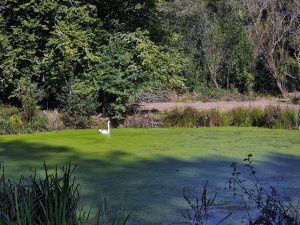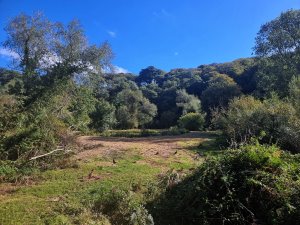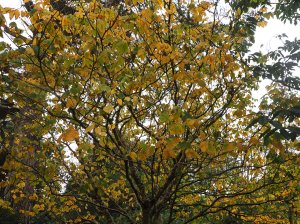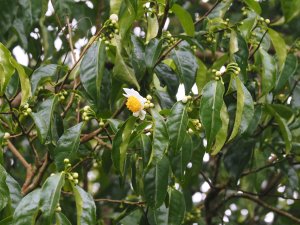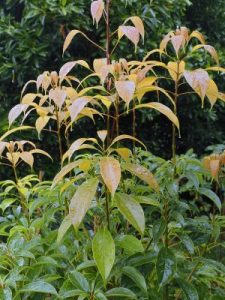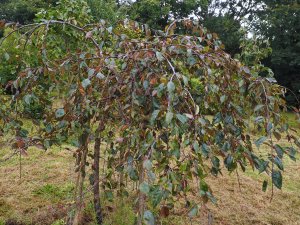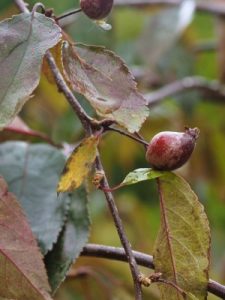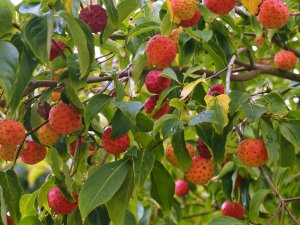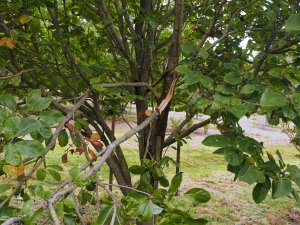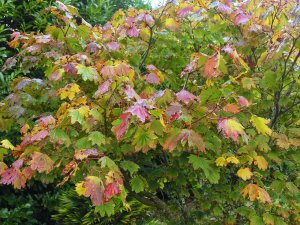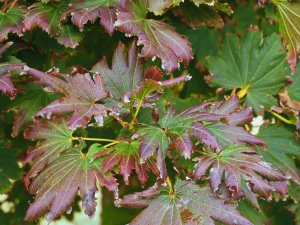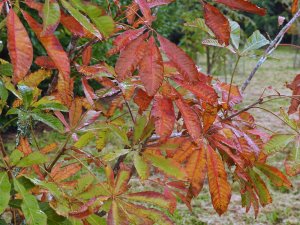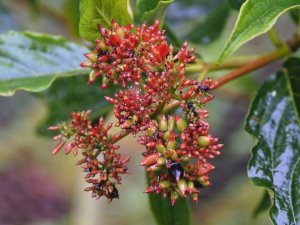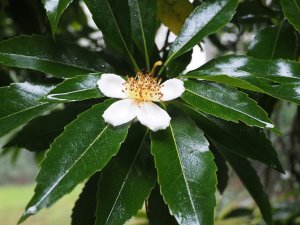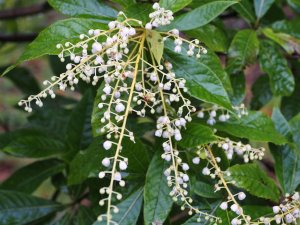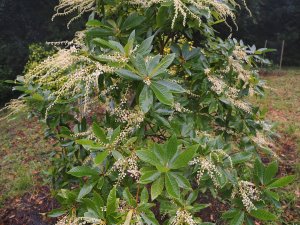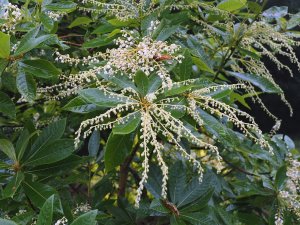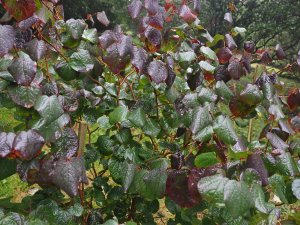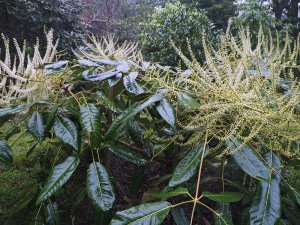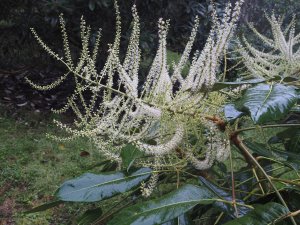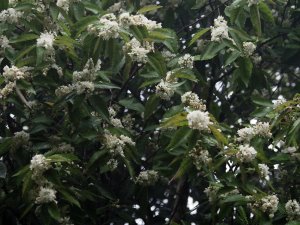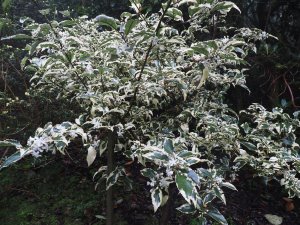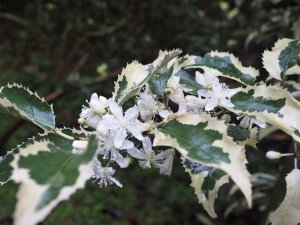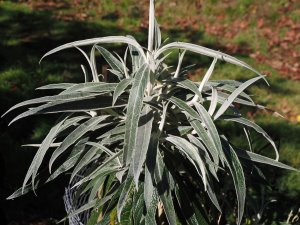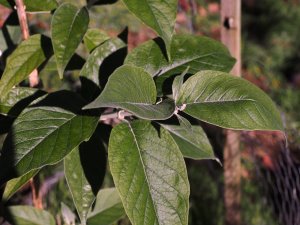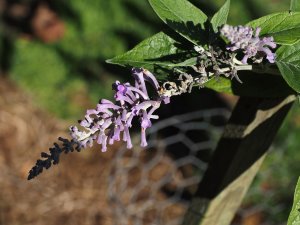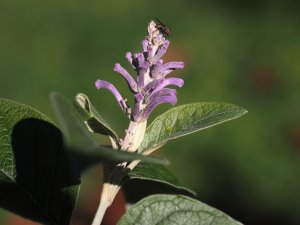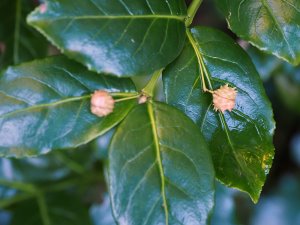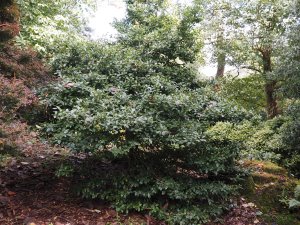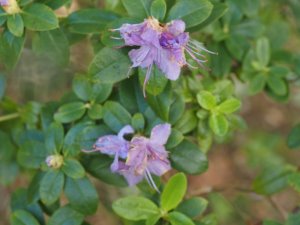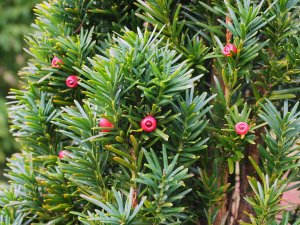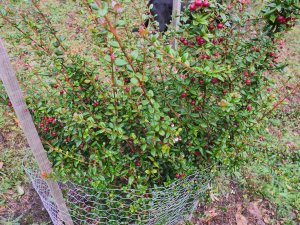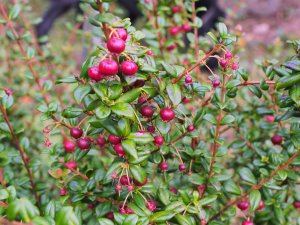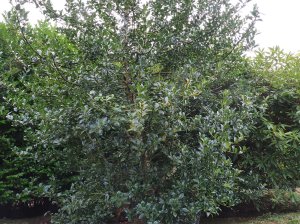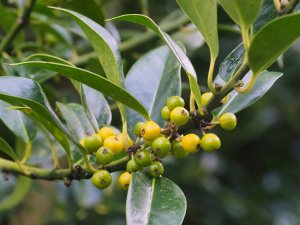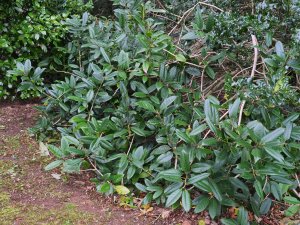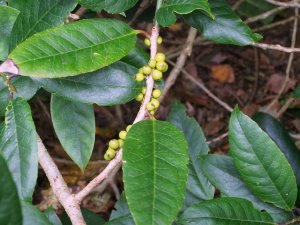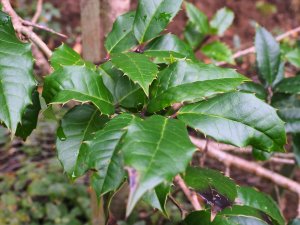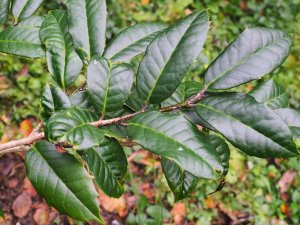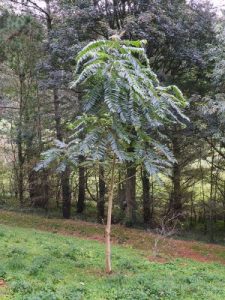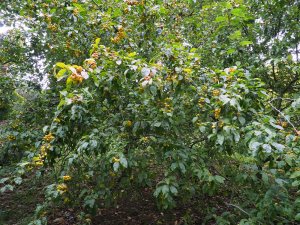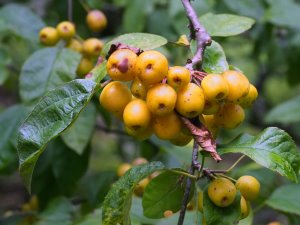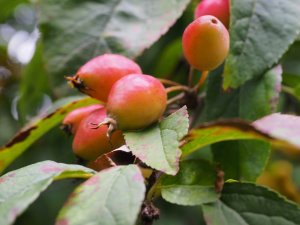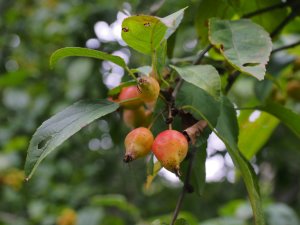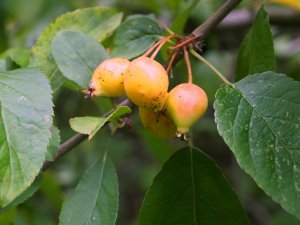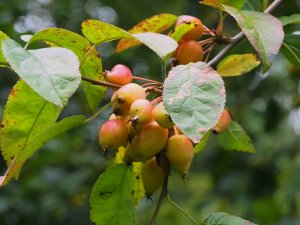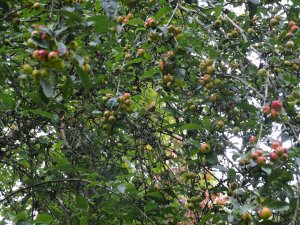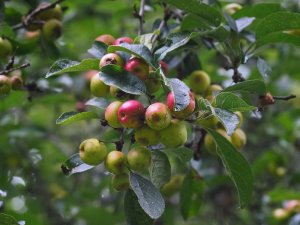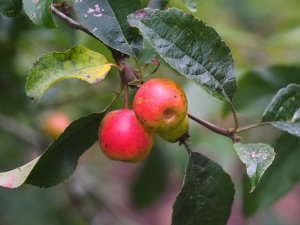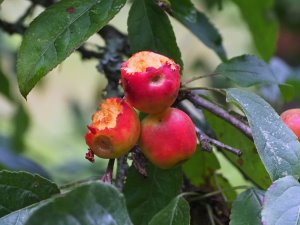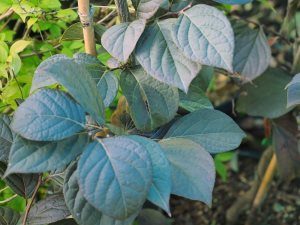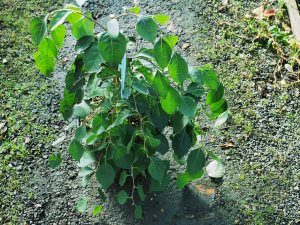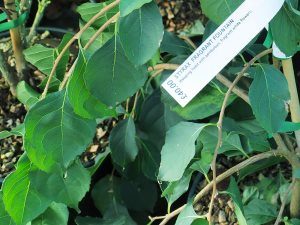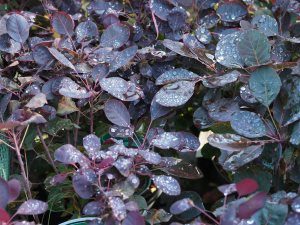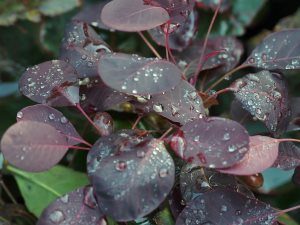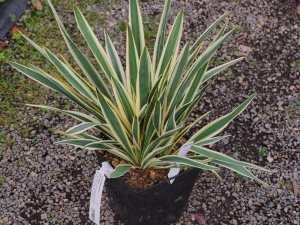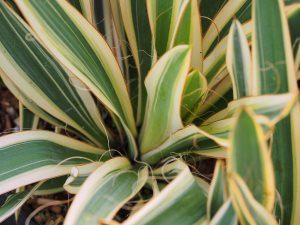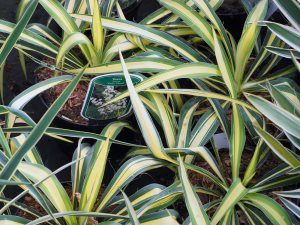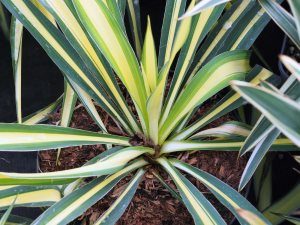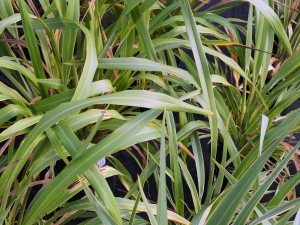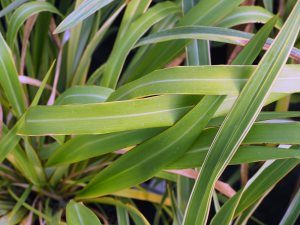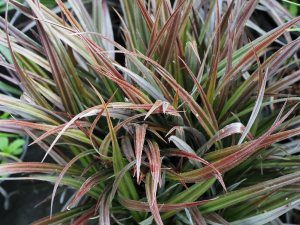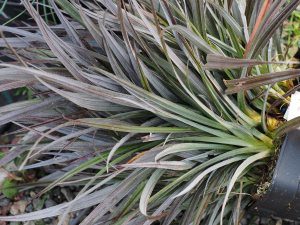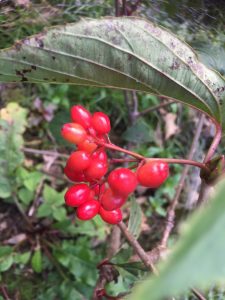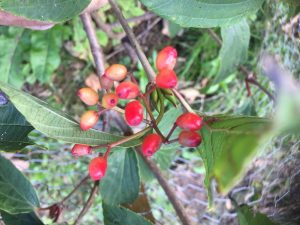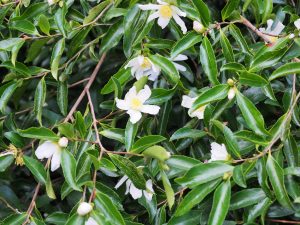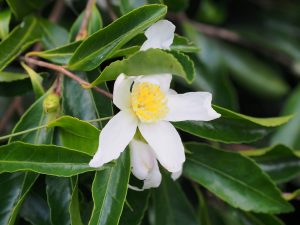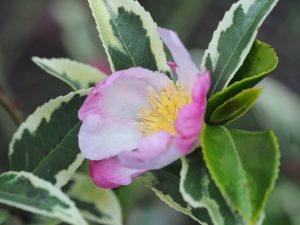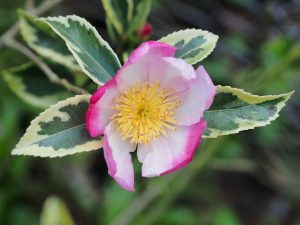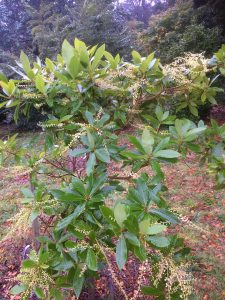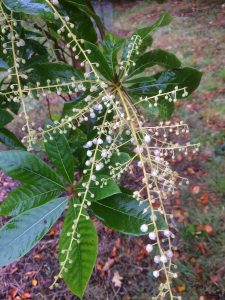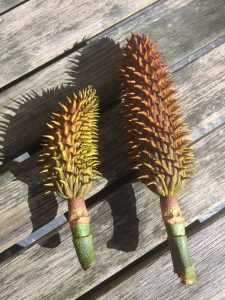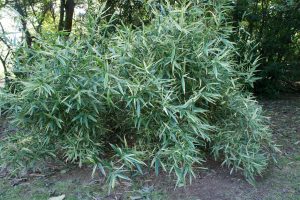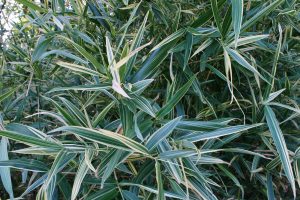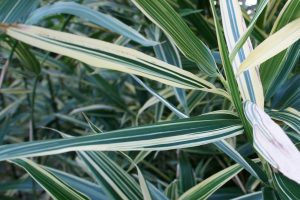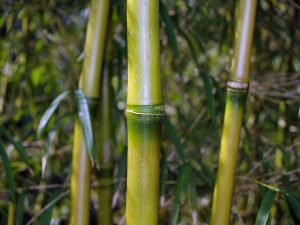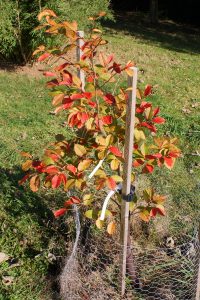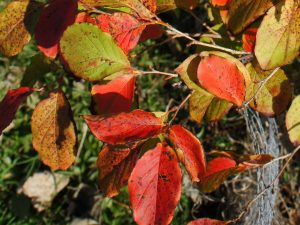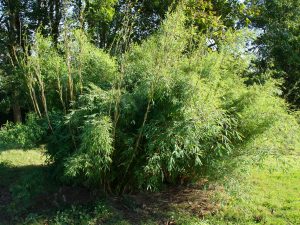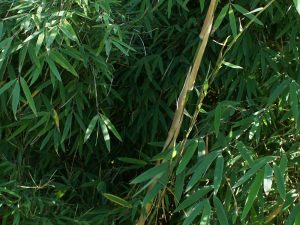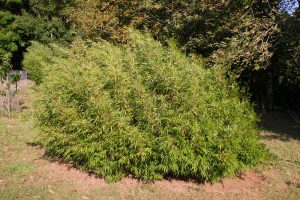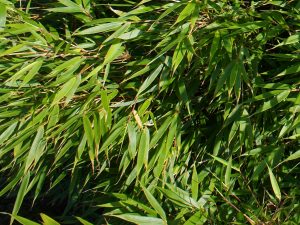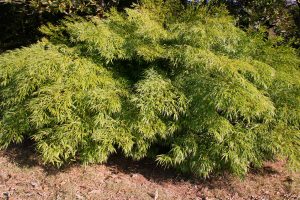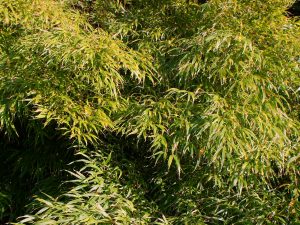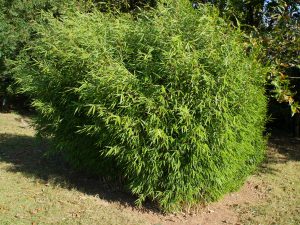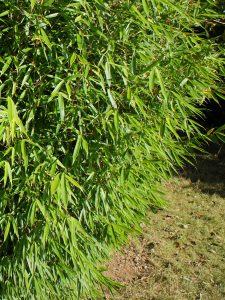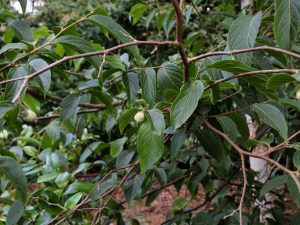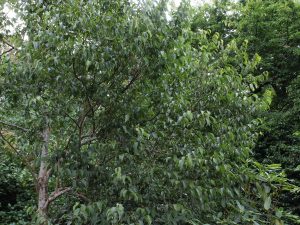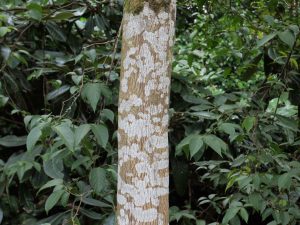2024 – CHW
A single swan has taken up residence in the top pond. Probably after the dust up between this year’s cygnets and their parents and 3 of last year’s cygnets which was in the diary a week or two ago. The top pond is small but has any amount of pond weed for a swan to gorge on. Flying away in an enclosed space will be very difficult and I assume this swan will have to walk down the water meadows to achieve lift off.
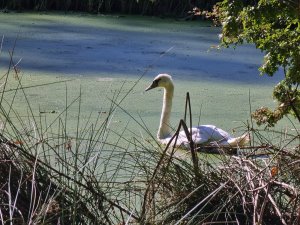
A garden tour with Peter Mills.Seed heads on Viburnum taiwanianum.
Buddleja speciosissima was planted out last spring. Interesting new growth today.
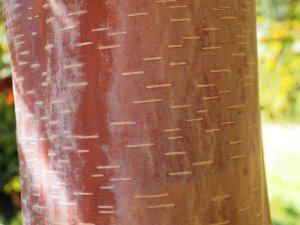
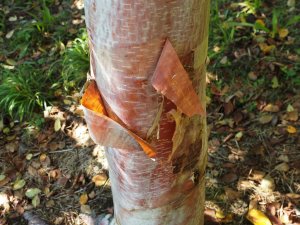
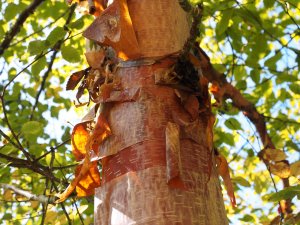
2021 – CHW (photos to follow)Our spring order of daffodil bulbs has just arrived from Ron Scamp’s son. These are what we hope they will go on to look like next spring growing along the bank as you walk under White Stiles field on the way to Old Park. They are all old Cornish bred varieties from one of the very last small scale daffodil growers and breeders left in the traditional Cornish business of daffodil production which goes back to the 1880s. All power and success to Mr Scamp! Other Cornish daffodil growers are larger scale (mainly Dutch) growers and cut flower sellers who would not bother with old traditional varieties like these.
2020 – CHWA trip along Sinogrande Walk.
Taxus baccata ‘Standishii’ – a female form of fastigiate holly which has yellowish new growth. Here with its first crop of berries that I have seen anyway. Planted 2008.
Now on down onto Bond Street – sadly nothing that I photographed appears on the planting plans.
This is a self or bird sown Ilex kingiana which has flopped over or been pushed over into the light by a nearby common holly. Some berries even on this young plant.
Then a nice surprise which I have missed out on in recent years. I remember planting out these three or four malus 25 or so years ago. They may have been from Westonbirt. Dullish plants with no labels then put in a not very often seen place. There are three very distinct and different forms of crab apples here. I assume they are all species if they did come from Westonbirt?
Left to right:
2019 – CHW
Lots more new things which will very shortly appear on the Burncoose website and then in our new 2020 catalogue to be mailed just after Christmas.Styrax japonicus ‘Purple Dress’ is a very different colour to S.japonicus ‘Evening Light’ which is much blacker (and not purple) at this time of the year and with smaller leaves.
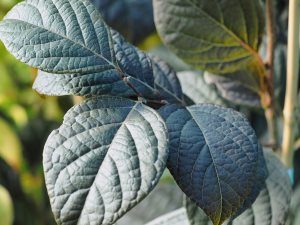
The first berries on a young Viburnum setigerum which was a Wilson introduction. The berries go from yellow-orange to red when ripe.
2017 – CHW
As in previous years Clethra pringlei is the last of the clethras to flower. This plant was slow to get away and is clearly sensitive to cold but is now performing well.
Sad news. The recently registered (as new) Magnolia ‘Tropicana’ has split in half overnight. We have had a week of unusual strong south east winds which are mildish in temperature but strong enough to break much debris onto the drive and split a magnolia in full leaf. We will send cutting material to Burncoose tomorrow. I promised a review of the newer bamboo species and how they have progressed in a year since they were last photographed:Hibanobambusa tranquillans ‘Shiroshima’ had seemed a dwarf but is now racing away to 6ft. A very attractive variegated bamboo and one we must get for the nursery to stock. We could dig a few canes here soon.
I see on the plan that I have missed the seventh one – Himalayacalmus falconeri. This has grown poorly and only two survive from the original clump of three or five. This lot are more exposed to wind but the survivors seem fine today.I think I am sick of new bamboo species and their bizarre unpronounceable names so I will spare you pictures of the dozen or so other new ones planted this spring. At least the fucking deer do not eat bamboo! Much evidence of new nibbling all over this area.
2015 – CHW
A very happy two and a half hours collecting and swapping seed with Tom Hudson. We inspected the following styrax and collected seed from most of them:
Styrax odoratissimus (veitchiorum) (above greenhouse) – very different to Tom’s
Styrax serrulatus (by Magnolia Atlas)
Styrax hookeri (several mature plants – Rockery, Slip Rail, Georges Hut)
Styrax obassia (Drive and Bond Street – old plant at Crino Hedge nearly dead)Styrax formosanus var formosanus (above Crino Hedge in new planting)
Styrax japonicus ‘Fargesi’ (above Crino Hedge in new planting)
Styrax japonicus (old plant on Burns Bank)
Styrax wuyuanensis (above Crino Hedge in new planting)
Styrax faberi (above Crino Hedge in new planting)
Styrax japonicus var hayatiana (perhaps formosanus var hayatiana – there is one in Kennel Close and one above Crinodendron Hedge)
Styrax hemsleyanus (above Crino Hedge in new planting)
Styrax officinalis (above Crino Hedge in new planting – one survivor from two planted?)
Styrax shiraianus (Burns Bank – small plant)
We did not find Styrax wilsoni or Styrax dasyanthus on our travels. The former may have died out but I remember planting several seedlings. Our original plants of Styrax hookeri and Styrax hemsleyanus have been dead for some time by Charles Michaels Nursery. I think we have also planted out a Styrax confusus and perhaps Styrax calvescens.
Clearly there are several more species to hunt for to add to our collection: Styrax suberifolius, Styrax redivivus, Styrax platanifolius, Styrax limprichitii.
Tom very kindly gave us plants as follows:
Lapageria (pink) x 1
Quercus lomboldtii boadta x 1
Magnolia cathcartii 13215 x 3
Styrax 2975 x 3
Styrax 1390 x 3
And seeds as follows:
Styrax confusus TH2200 from Lu Shan Jiangxi
Magnolia sprengeri (shell pink) TH2823 from Leigon Shan, Guizhan
Rhododendron yuetengense TH2785 from Maoer Shan
Styrax limprichtii 2+F Coll Erhalpk Dalai Yunnan
Pterostyrax psilophyllus var leveillei
Camellia yunnanesis yunnanense TH452
Returned from Scotland, a great rhododendron year. Martin’s seedling rhodo’s quite unbeaten by anything I have ever seen. Hydrangeas very nice.




